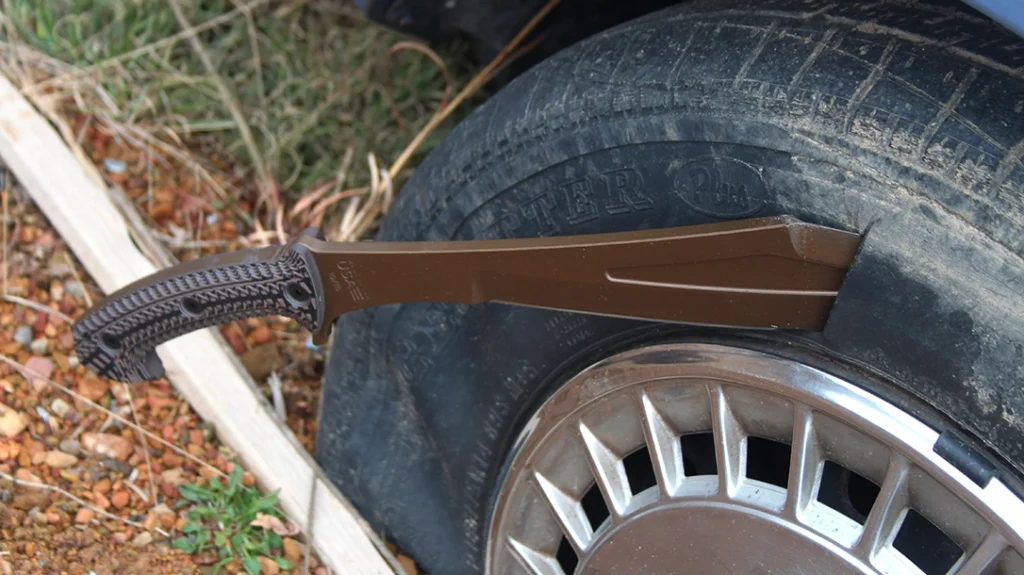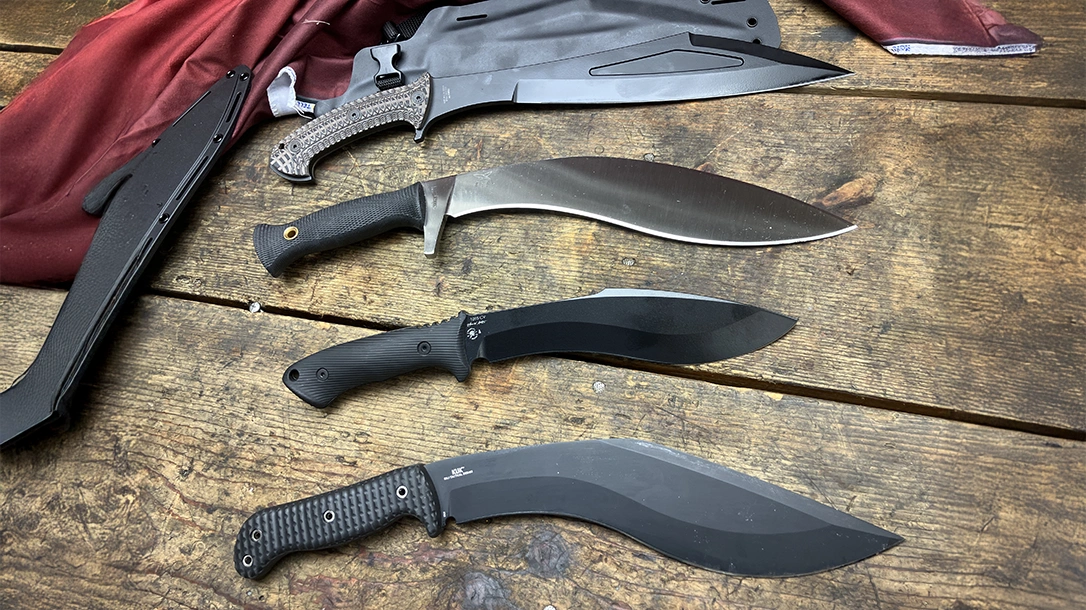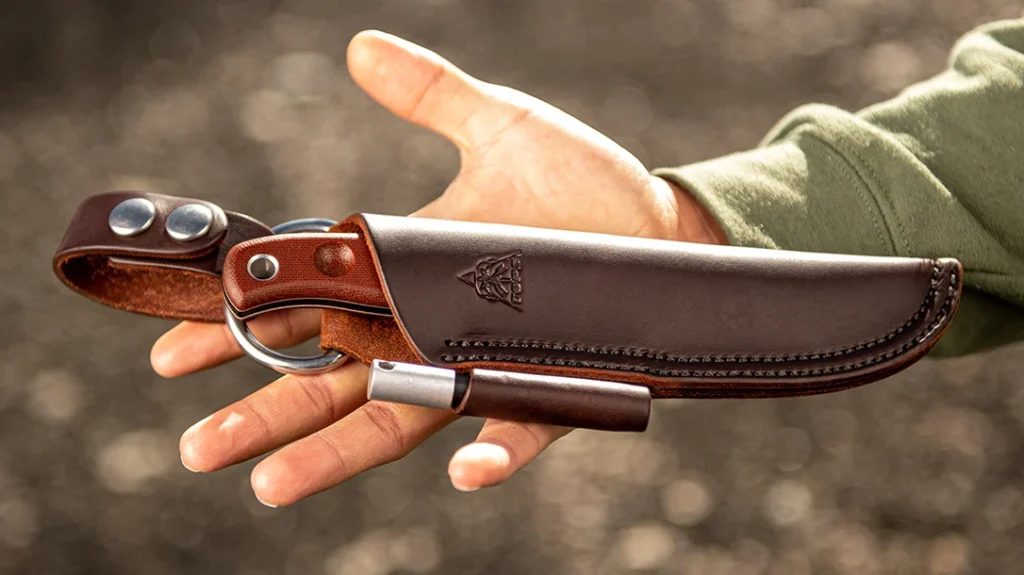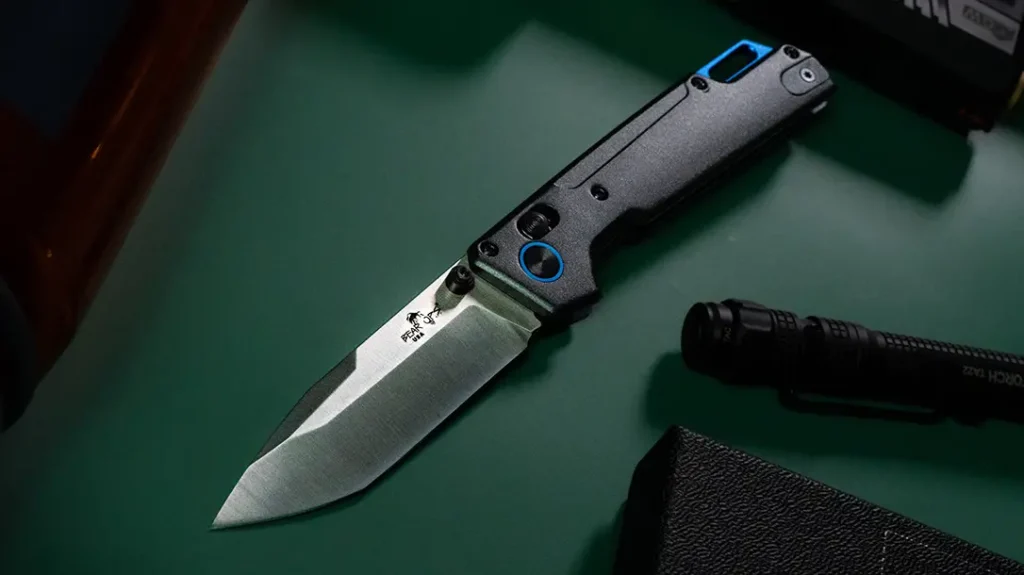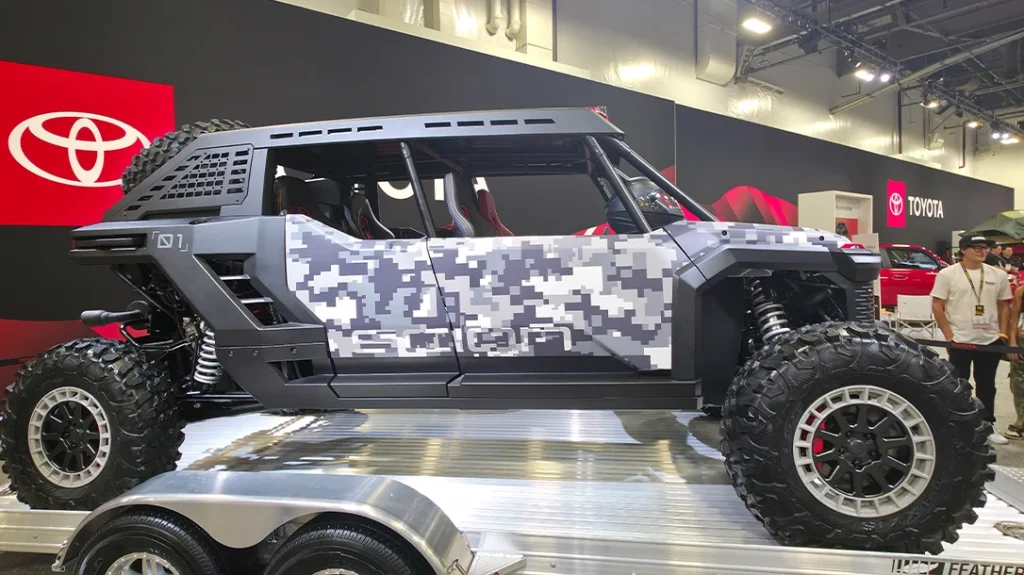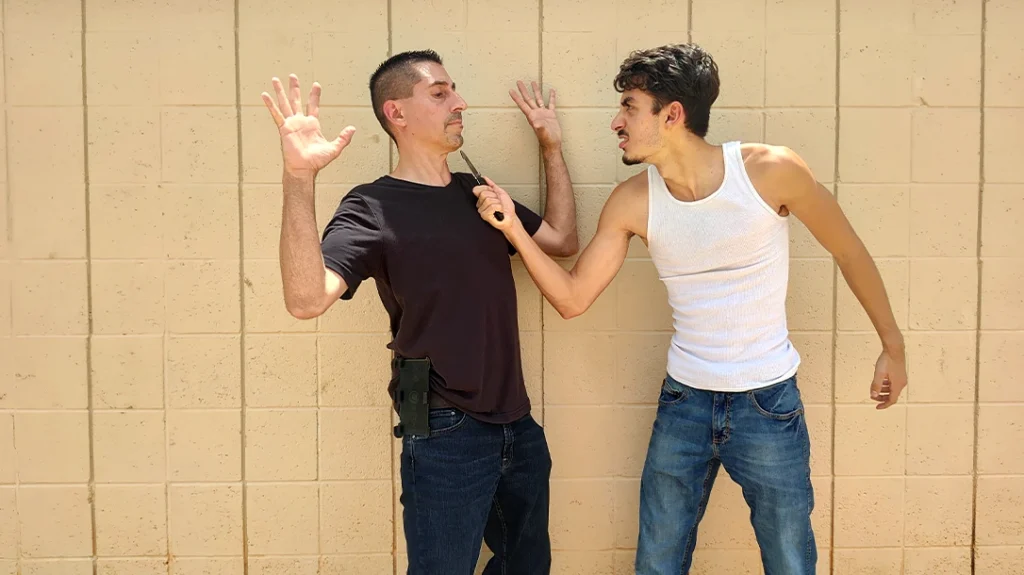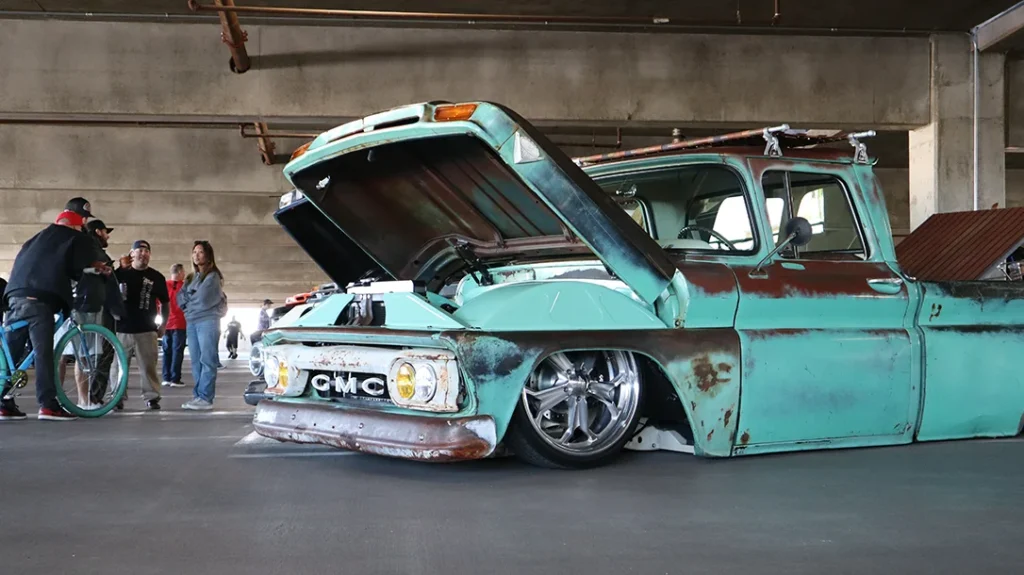The kukri knife is a distinctive edged weapon recognized worldwide. The exact timeline of the kukri’s origins is debated by archeologists, with some dating it back to the BC range, while others place it in the 7th Century. Before the kukri became the national symbol of Nepal, famous for its association with the Gurkha troops serving in the British Army, it was a tool.
What is the Kukri?
The kukri can be classified as a type of machete. Like most tools originating from agrarian use, the kukri was used for a myriad of tasks. Its balance point is toward the front of the blade, providing more chopping force compared to traditional-style machetes. The kukri combines a knife’s nimbleness in the hand with a machete’s reach.
An edged weapon’s primordial pull is hard to deny. Sharp objects subconsciously awaken our primal instincts, harkening back to when a cutting edge meant the difference between survival and perishing. Blade use involved a close-range, face-to-face encounter with other humans or animals.
Advertisement — Continue Reading Below
Blades stir up the same primeval fascination as watching flames dance over a fire pit. Each represents a sensation placed in the deepest regions of our brain stem.
Every advancement in materials technology, from our earliest steels to modern-day steels, has been applied to edged weapon production. The goal is to create sharper, stronger, and more durable weapons. Our connection to firearms is a mere blip on our timeline when compared to knives/edged weapons.

Advertisement — Continue Reading Below
Unlike a dagger or other specialty blades, the kukri is not a delicate mission-specific CQB blade. The kukri has numerous non-lethal applications, from brush clearing, creating shelter, wood chopping, quartering game, food prep, etc. It combines the chopping power of the hatchet with the finesse of the knife.
Even with blades following the “kukri style,” there can be variations that take many shapes and forms, dictated by individual need and mission. Below is an assortment of production kukris in various sizes, designs, and price points that prove this point—pun intended.
Cold Steel Gurkha Kukri Plus
The top-end Cold Steel kukri is the Gurkha Kukri Plus. This model is offered in 4034SS and CPM 3V steel. The distinctive kukri-patterned blade measures 12 inches and is 5/16-inch thick. It has an overall length of 17 inches and weighs over 30 ounces.
Advertisement — Continue Reading Below
Its contoured and tapered handle is covered with Cold Steel’s signature Kray-Ex rubber-composite grip. It is slip-resistant even when wet. The Gurkha Kukri Plus feels more knife-like than a machete when gripping up on the handle. However, it maintains a machete’s swipe or whip motion when held more loosely.
Cold Steel’s design is not random. It resulted from a collaboration with Dr. Maung Gyi, chief instructor of the American Bando Association. The blade is almost an inch wider near the tip than at the handle. This shifts the knife’s balance point forward, allowing a substantial blow to be struck with minimal effort. It completes the cut solely with inertia.
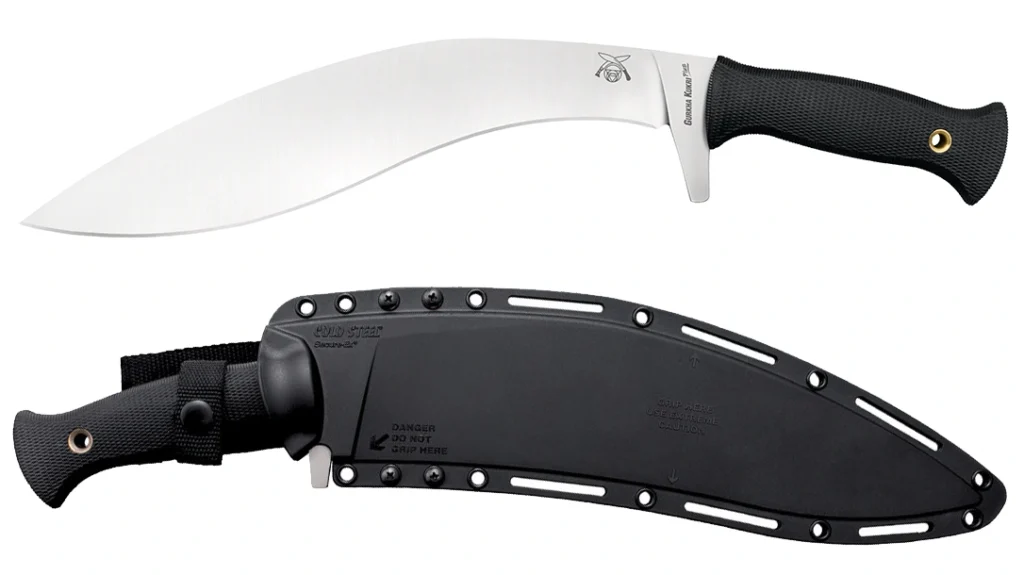
Advertisement — Continue Reading Below
Cold Steel’s Gurkha Kukri Plus features a longer, narrower point with more distal tapering to the spine. This results in a thinner, sharper point that penetrates better than more traditional kukri blade styles.
The Gurkha Kukri Plus slashes and thrusts with equal efficiency. This is the main reason for the kukri’s fierce reputation as a fighting knife. It is razor sharp out of the box.
In the car genre, there is an aphorism: “There is no substitute for horsepower.” The Gurkha Kukri Plus represents this for fighting knives. Short sword is a fitting description, with dismemberment not far-fetched when swinging a blade like this with adrenaline pumping full force.
Advertisement — Continue Reading Below
There is purity in the kukri’s simplicity. No artistic flourishes or clever knife drills are needed, just aggression and basic knowledge of human anatomy.
Multi-Tasking Kukri
The size and design of the Gurkha Kukri Plus are perfect for dishing out lethality or the more mundane, heavier chopping chores associated with survival needs. It excels in creating temporary shelter, dismembering food sources, or preparing a fire.
While such tasks are a good benchmark, it was important to do more than this with the Kukri Plus. It was utilized in the kitchen to determine if its size impacted effective food preparation. By choking up and adjusting the hand on the grip or even up on the non-sharpened part of the steel it made short work of slicing/cubing up venison and vegetables destined for the slow cooker.
Advertisement — Continue Reading Below
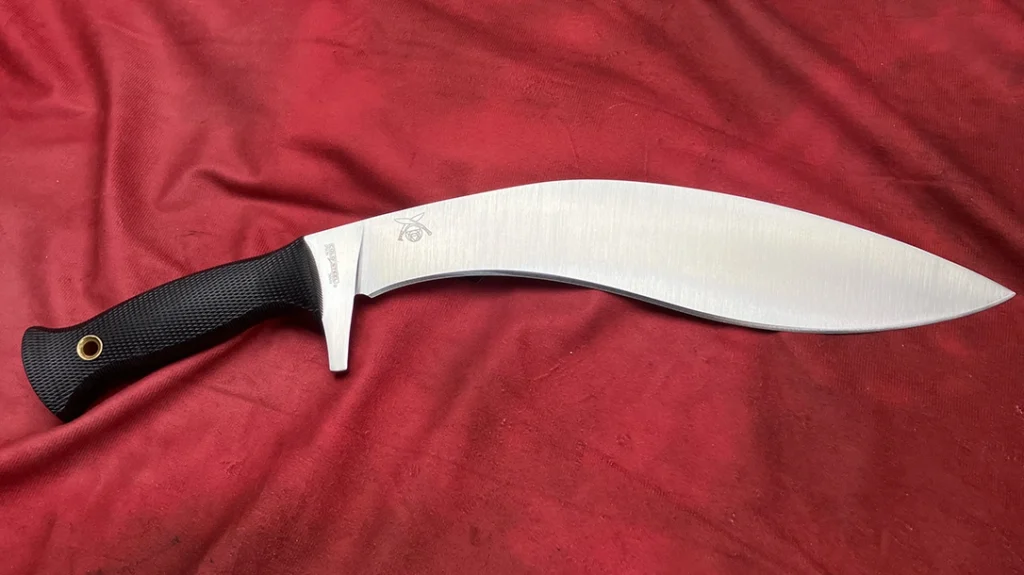
Various wood whittling was done as well to test the finer details of creating a snare or other animal traps. The large blade handled these tasks with ease. A true compliment to the legacy of the kukri and Cold Steel’s execution of the Gurkha Kukri Plus.
It is consoling and a real morale booster to know that your blade of choice outclasses any opponent’s knife in terms of utility, durability, power, reach, and lethality. This is what the Cold Steel Gurkha Kukri Plus represents.
Advertisement — Continue Reading Below
CRKT KUK
CRKT decided to offer a kukri version in the form of the KUK, designed by Ryan Johnson. Ryan is a respected designer in the cutlery world, with his RMJ Tactical producing tomahawks, knives, and other unique blade designs.
CRKT’s literature describes the KUK as an outdoor utility machete with unique kukri flair, distinguishing it from a more general type of machete. The KUK has an overall length of nearly 16 inches with a 10.5-inch blade and weighs 14.7 ounces. Its blade is slimmer than typical machetes, measuring .139 inches thick.
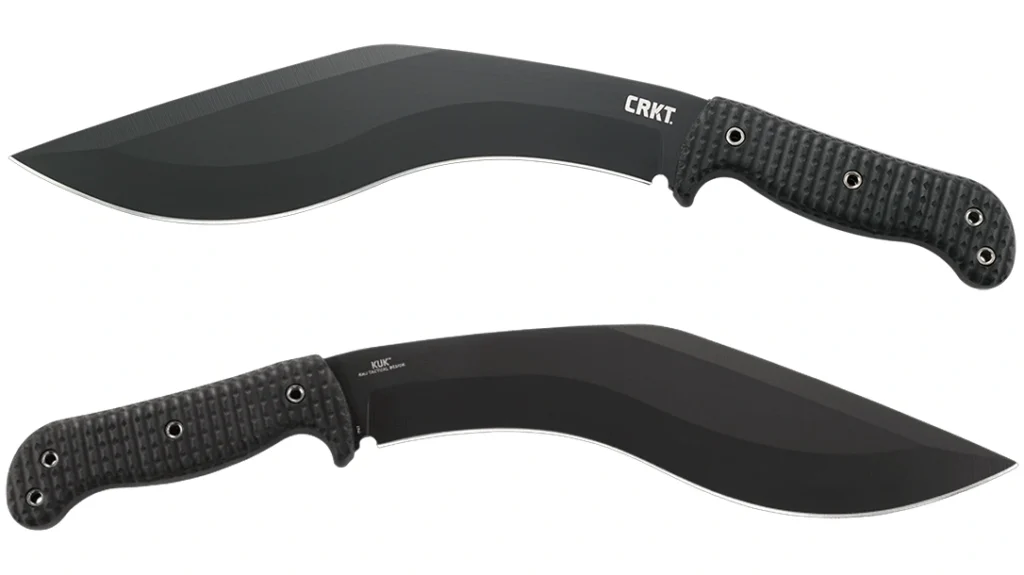
Advertisement — Continue Reading Below
The CRKT KUK is made from 65Mn. It is spring steel with thermal resistance. Research indicates that 65Mn is equivalent to 1065 carbon steel. Both are considered an economical tough steel good for applications requiring some temper. Thus, they are ideal for use in a machete-like tool.
The KUK is bead blasted and then black powder coated to assist with resistance to weathering/corrosion. However, as with any carbon steel blade, it is best practice to wipe the KUK down with a light coat of oil to prevent rusting.
The KUK’s handle is double-injection molded and surrounds the full tang, held in place by pins. Its recurve blade and handle design set it apart from most other machetes. The rubber handle isolates vibration from the user’s hand. Likewise, the texturing keeps the KUK firmly in your hand even when sweaty.
CRKT Clever Girl Kukri
Part of CRKT’s Forged by War program, the Clever Girl Kukri is Austin McGlaun’s take on the kukri. Inspired by some of his duties while in the Army, Austin designed a blade to help with camp chores. Made from SK-5 steel, the Clever Girl Kukri features a 7.75-inch blade, bringing the overall length to 13.25 inches and the weight to 14.2 ounces. G10 handle scales provide a solid purchase when using.
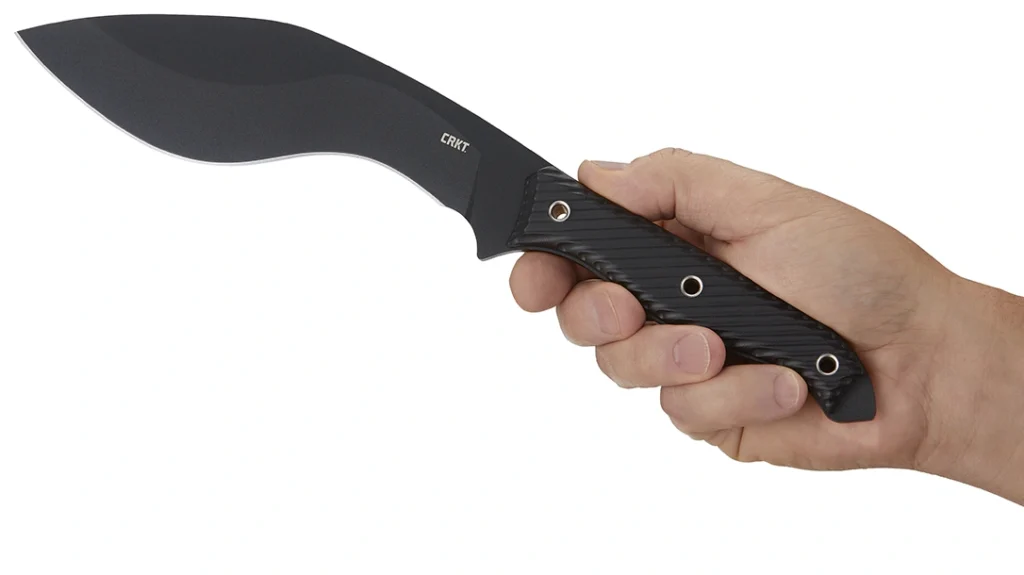
The Clever Girl Kukri is a multipurpose blade that can serve equally well as a fighting knife or a general field knife. It would be at home on the web gear, belt, or chest rig of any soldier or law enforcement user. However, it would also be comfortable attached to a hiker’s backpack.
Spartan Harsey Kukri
This Spartan Blade offering was designed by William W. Harsey Jr. and manufactured by KA-BAR knives. Its design allows it to function as a smaller knife when using the narrower part of the blade near the handle. However, the heavier, wider end, toward the tip, serves as an efficient axe or small shovel.
The Spartan Harsey Kukri embodies the kukri’s versatility. At 8.75 inches, the 1095 Cro-Van blade contributes to an overall length of nearly 14 inches and a weight of 20 ounces.

The Spartan Harsey Kukri should be thought of as a utilitarian tool. A knife that serves a myriad of functions- cutting, digging, splitting wood, food prep, first aid, shelter building, fire making, hunting, prying, signaling, hammering, and lastly, self-defense.
Not to cause a stir, but any knife can be deployed for combat. The reverse cannot be said for a knife being able to perform as a utility/survival knife. Many fighting knives are not up to the task of chopping or heavy work. Think about the likelihood of a dagger or stiletto suffering structural failure while attempting to procure firewood.
The Spartan Harsey Kukri offers this flexibility.
Fury SR
Wanted to leave you with a “hot take” to stimulate some thought. For me, the Fury SR is a “form follows function” creation. The Fury SR, unfortunately, is now in a production hiatus. It was designed by Rob “Filo” Cabrera and manufactured by Doublestar/Outlier during his time there.
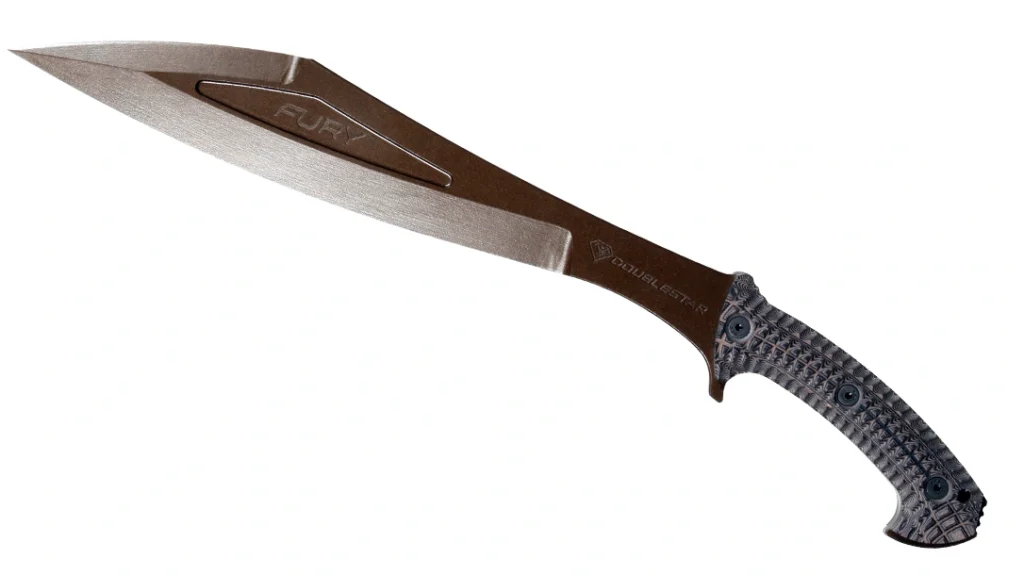
I have known/interacted with Rob over the last 10 years or so. My layman’s eyes see that the Fury is a refined kukri with the added benefit of better thrusting/stabbing potential. While Rob would not fully embrace this, he begrudgingly admitted he could see where I was coming from.
Rob’s extensive martial arts experience has been poured into the Fury concept. He connects his Fury design to Filipino blade influence stemming from the bolo machetes. More specifically, blades originating from the Sulu Region of the Philippines.
The terrain here is thick, with blade length thusly affected, at typically 12-20 inches. These Filipino blades are de-limbers—something shared with the kukri.
The Fury is meant for tight-quarter “phone booth”- sized engagements. Made from 80CRV2, the Fury measures 0.285 inches thick, 18.25 inches long, and features a 10-inch razor-sharp edge. The weight is 27 ounces.
Rob wanted the Fury stout enough for breeching but lightweight enough for close quarters. Likewise, it had to carry comfortably.
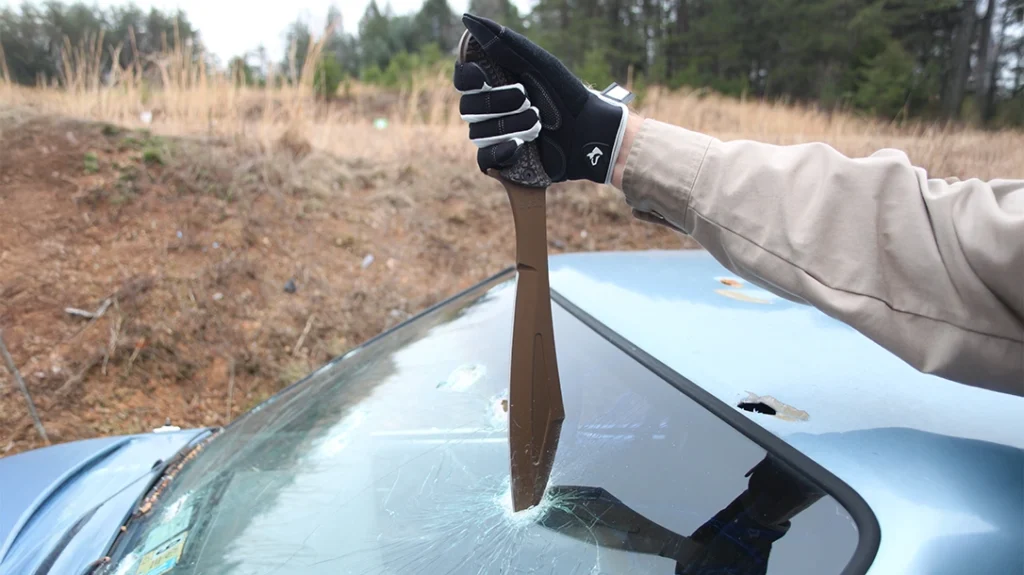
The Fury has its balance point toward the front of the blade. This maximizes blade speed/force towards the target. This is one of the roots of my kukri analogy, along with the Fury SR’s overall aesthetics.
The Fury’s handle profile is meant to keep the blade locked in your hand during high-velocity swings, even if your hands are compromised with sweat or blood. The textured G10 grips with custom raised pinnacled knurling also contribute to this.
Hopefully, Rob’s Filo Bladeworks will be bringing the Fury SR back soon.
